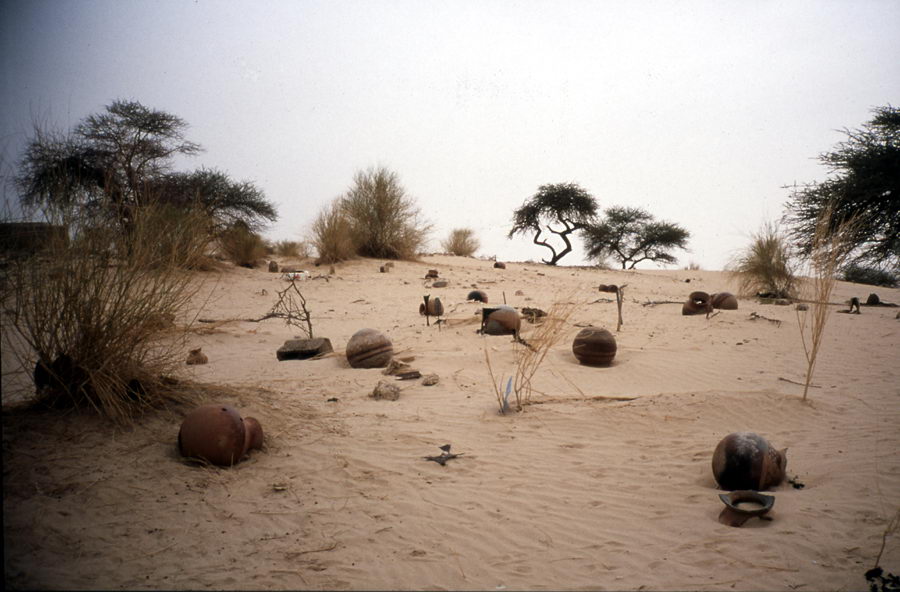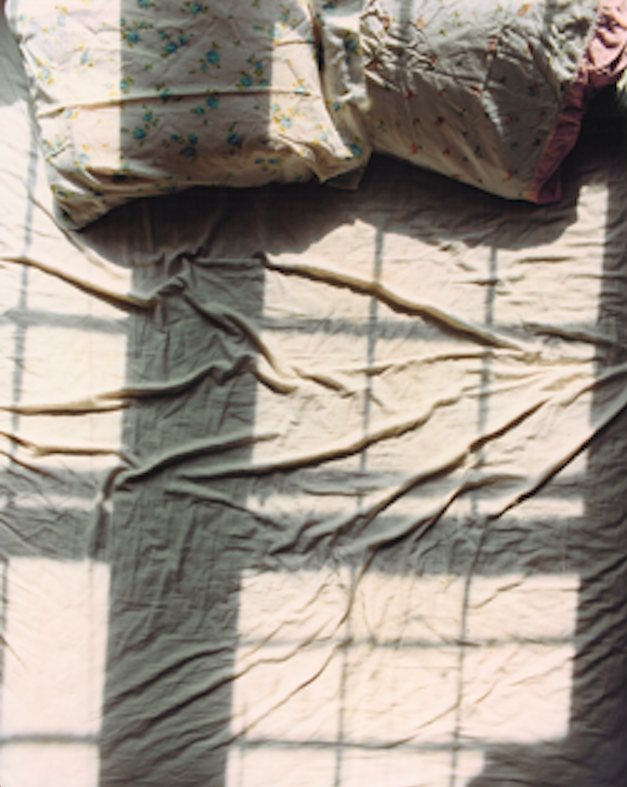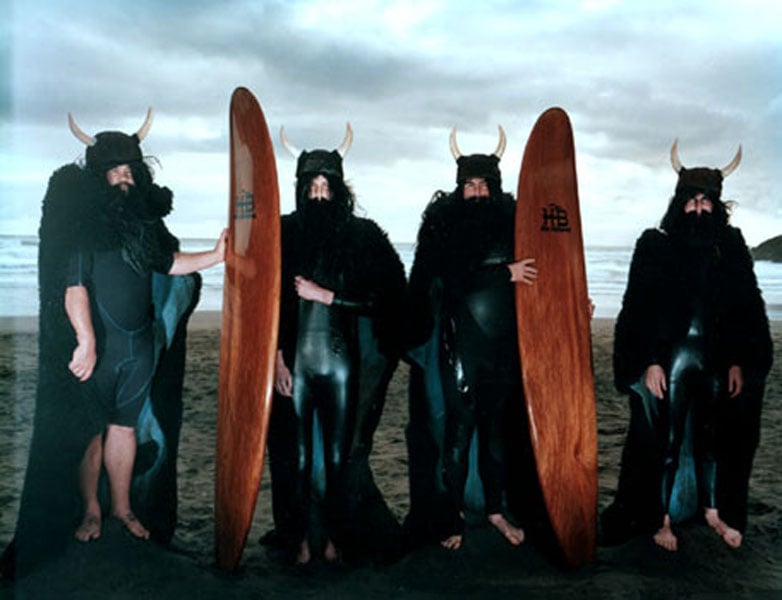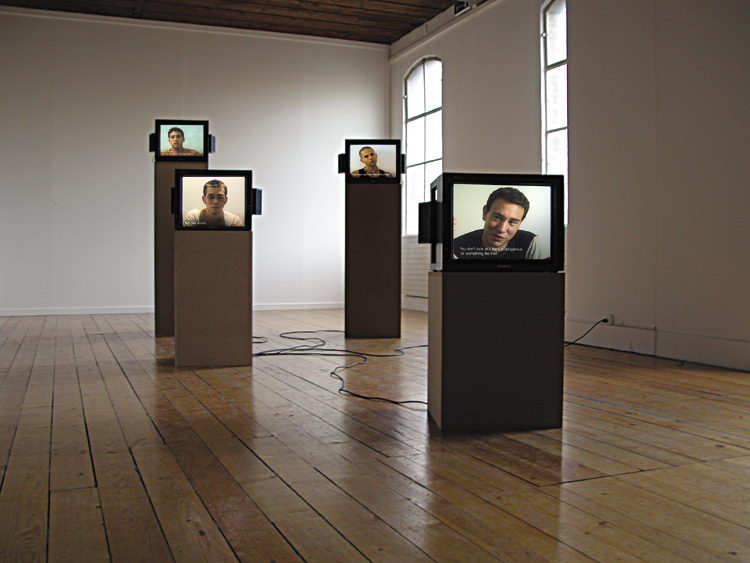
© » KADIST
Humberto Diaz
The two works in the Kadist collection, Observador Pasivo and 3600 besos por hora by Diaz are culled from a vast compilation of videos and performances for the camera. These are very successful in transcending the local into the global and/or universal. Memory, surveillance, and the routine and/or familiar, life in terms of both the political life and the social collective life shared by the constant reminder of the shut-off island psychological landscape.

© » KADIST
Matthew Buckingham
Matthew Buckingham presents a narrative directly connected with a highly symbolic site in the United States, the Mount Rushmore Memorial*. He elaborates a historiographic narrative of this place and switches it into the domain of science fiction by proposing a photograph of the Memorial as it should appear in 500 000 years. The effigies of Washington, Jefferson, Lincoln and Roosevelt become unrecognizable.

© » KADIST
Artur Zmijewski
Zeppelintribüne (2002) was shot near the Zepelintribune in Nuremberg, designed by Albert Speer, chief architect of the Third Reich. The 360-metre-long structure is part of a larger architectural complex called the Zeppelinfeld, which the National Socialist used for their marches and rallies. The Zeppelintribune was immortalized in the Leni Reifenstahl’s film-propaganda masterpiece the Triumph of the Will, a record of a 1934 Nazi Party rally.

© » KADIST
Jeff Wall
As suggested by its title, Pipe Opening (2002) depicts a hole in a wood wall exposed by the removal of a pipe. In contrast to his signature immense tableaux, Pipe Opening is a direct but modest document of a “real” scene that Wall “encountered by chance” in daily life. However factual, the image indicates certain enigmatic significance, allowing multiple interpretations.

© » KADIST
Juan Capistran
The Breaks reflects Capistran’s interests in sampling and fusing different cultural, social, and historical sources. Growing up in an African-American community in Los Angeles, Capistran has long been influenced by hip-hop culture. The photographs in this print document him surreptitiously breakdancing on Carl Andre’s iconic lead floor piece after the guards at the Los Angeles County Museum of Art have left the gallery.

© » KADIST
Gabriel Orozco
Gabriel Orozco comments: “In the exhibition [Documenta 11, Kassel, 2002], I tried to connect with the photographs I took in Mali in July. I traveled to Mali for three weeks and took some photographs related to my work. They are very different, but there are links as the graveyard of Timbuktu, which I discovered during the trip.

© » KADIST
Luisa Lambri
Lambri’s careful framing in Untitled (Miller House, #02) redefines our understanding of this iconic mid-century modernist building located in Palm Springs, California. Commissioned by industrialist J. Irwin Miller and his wife Xenia Simons Miller, and built by Richard Neutra in 1937, the Miller house’s open and flowing layout expands upon modernist architectural traditions. It features a flat roof, stone and glass walls, with rooms configured beneath a grid pattern of skylights and supporting cruciform steel columns.

© » KADIST
Tammy Rae Carland
Carland’s series of large-format photographs Lesbian Beds (2002) depicts beds that have been recently vacated. Shot from directly above, they are lavish views of very private spaces. The artist plays to her viewers’ voyeuristic impulses, inviting us to look, but then denying us the opportunity to study the figures to whom the sheets belong, so that the rumpled covers become like anthropomorphic stand-ins inviting empathic projection.

© » KADIST
Mark Grotjahn
Drawing & Print (Drawing & Print)
This particular drawing, like many of Grotjahn’s works, presents a decentered single-point perspective. Unlike the traditional vanishing point, the rays here emanate from the surface’s middle and hover around an indefinite and impossible convergence. The resulting fluttering of the image’s sections animates the drawing in relationship to its named subject, the butterfly.

© » KADIST
Douglas Gordon
Blind Spencer is part of the series “Blind Stars” including hundreds of works in which the artist cut out the eyes of Hollywood stars, in a symbolically violent manner. An emptiness (some are burned letting appear a white or mirror background or a mirror) replaces the eyes, giving the impression of a blind eye deprived of all expression. Paradoxically, the work looks at us all the more intensely.

© » KADIST
Anri Sala
Ghost Games , follows the enigmatic dance of crabs “steered” by a flashlight in the night of darkness of a South American beach. The video produces a surreal impression, typical of Sala’s work, with no plot in the classical sense, no story being told. Like in Blindfold (2002), in which a sunrise is reflected in urban billboards, and Time After Time (2001), in which the figure of a horse emerges from darkness lit by the headlights of an automobile, Sala likes to explore the phenomenon of light and its effects; In Ghost Games , he uses the threatening reflection of the flash light through the darkness of the beach.

© » KADIST
Mary Ann Aitken
Untitled (Boom Box, Double-Sided) by Mary Ann Aitken is representational painting of a boom box on an unconventionally long canvas painted on both sides, to mimic the scale and appearance of the actual appliance. Known for going against trends, Aitken often favored dimensions, such as the square, that were otherwise considered out of style in contemporary painting. In this double-sided painting, one side depicts the titular boombox set up—a boxy cassette player, flanked by a pair of stereo speakers in front of wood panelling.

© » KADIST
Olaf Breuning
For this image, Olaf Breuning invented a revised stone age corrected for the cinema in which dolmens and leather were replaced by surf boards and neoprene clothing. With the beach as a backdrop, the hyper-aestheticized vikings seem to pose for a surf ad. The collage on the horizon line, the heterogenous nature of the lighting and the costume-like clothing all point to the mise en scène.

© » KADIST
Bernard Piffaretti
Bernard Piffaretti was born in 1955 in Saint-Etienne. He graduated from the school of Fine Arts of Saint-Etienne, and he now lives and works in Paris while expanding his carrier internationally. Like On Kawara, Stanley Brouwn or Roman Opalka, Bernard Piffaretti is also a “protocol artist”.

© » KADIST
Kota Ezawa
The Simpson Verdict is a three-minute animation by Kota Ezawa that portrays the reading of the verdict during the OJ Simpson trial, known as the “most publicized” criminal trial in history. In 1995, OJ Simpson—a well-known American football player—was accused of the murders of his ex-wife Nicole Brown Simpson and her friend Ronald Goldman. Based on the courtroom footage, Ezawa uses his signature style to create an abstract and graphically simplified echo of what happened in the room.

© » KADIST
Omer Fast
In this work, Omer Fast probes the feelings experienced by young people involved in an acts of war. Four monitors installed in the form a chariot of war relay the words and faces of four young Israeli soldiers. The installation shows a young generation confronted by the reality of danger, whether being attacked or facing death.

© » KADIST
Olaf Breuning
In the work We only move wehen something changes !! !, Olaf Breuning composes a portrait of posed antiglobalization protesters, each wearing clown noses, inside of a scene reminiscent of an event. Like in the work Easter Bunnies (2004) (photographs of the Moai of Easter Island with big ears and rabbit teeth supported by scaffolding) the artist introduces the outside frame into his photographic frame.

© » KADIST
Fikret Atay
In the video Rebels of the Dance , two boys are filmed dancing to traditional Kurdish songs inside of the confined space of an ATM. Shy, proud and joyful, the two boys appear to be influenced by a third person – the artist and his camera. Their play of eyes creates an atmosphere reminding one of the close scrutiny and state control of the Kurdish population.

© » KADIST
Dennis Adams
Observing the sky after 11 September 2001, Dennis Adams photographed elements which had been lifted by drafts and were floating above the city of New York. The artist was only able to identify the objects after developing and enlarging the prints: you can read “He’s no terrorist”. The front page of the newspaper thrusts back to ‘the event’ of the 21st century and is revealed only through the detailed observation of the image; the painful twist of the newspaper could be a rustling wing.

© » KADIST
Pierre Gonnord
Nakayama is part of a larger body of work by Pierre Gonnord focusing on the analysis and description of the lifestyles of urban youth in large Western cities. These images reflect on new canons of beauty, and the appearances and simulacra of fashion for a new generation. In particular, these works consider themes of androgyny, crossbreeding, and recycling.
Olaf Breuning
Olaf Breuning’s photographs, videos, performances and installations play with codes of mass production with references to publicity, fashion and cinema and “high” and “low” art...
Douglas Gordon
- location: Berlin, Germany
- year born: 1966
- gender: male
- nationality: Scottish
- home town: Glasgow, United Kingdom
Pierre Gonnord
Pierre Gonnord is known for his large scale photographic portraits of people who inhabit the fringes of society...
Fikret Atay
- location: Batman, Türkiye
- year born: 1974
- gender: male
- nationality: Turkish
Anri Sala
- location: Berlin, Germany
- year born: 1974
- gender: male
- nationality: Albanian
- home town: Tirana, Albania
Omer Fast
- location: Yerushalayim, Yisra'el
- year born: 1972
- gender: male
- nationality: Israeli
Bernard Piffaretti
Bernard Piffaretti was born in 1955 in Saint-Etienne...
Mark Grotjahn
- location: Los Angeles, California
- year born: 1968
- gender: male
- nationality: American
- home town: Pasadena, California
Mary Ann Aitken
Mary Ann Aitken was known to be very private about her art practice; she was considered somewhat of an outsider by her peers affiliated with the second wave of Detroit’s Cass Corridor arts movement...
Juan Capistran
- location: Los Angeles, California
- gender: male
- nationality: Mexican American
- home town: Guadalajara, Mexico
Tammy Rae Carland
Using photography, text, and video, Tammy Rae Carland tactically realigns traditional ideas of love, partnership, domesticity, and family...
Artur Zmijewski
- location: Warszawa, Polska
- year born: 1966
- gender: male
- nationality: Polish
Humberto Diaz
Context is everything when it comes to the work of Humberto Diaz...
Kota Ezawa
- location: San Francisco, California
- year born: 1969
- gender: male
- nationality: German
- home town: Cologne, Germany
Jeff Wall
- location: Vancouver, Canada
- year born: 1946
- gender: male
- nationality: Canadian
- home town: Vancouver, Canada
Dennis Adams
Since 1998, through site specific works, often in public spaces, or video works, Dennis Adams focuses on ambiguous characters, condemned by our recent history, revealing traumas or collective amnesia phenomena...
Gabriel Orozco
- location: New York City, Paris
- location: Mexico
- year born: 1962
- gender: male
- nationality: Mexican
- home town: Jalapa, Mexico
Matthew Buckingham
- location: Nevada, United States
- year born: 1963
- gender: male
- nationality: American
Luisa Lambri
- location: Los Angeles, California
- year born: 1969
- gender: female
- nationality: Italian
- home town: Como, Italy





